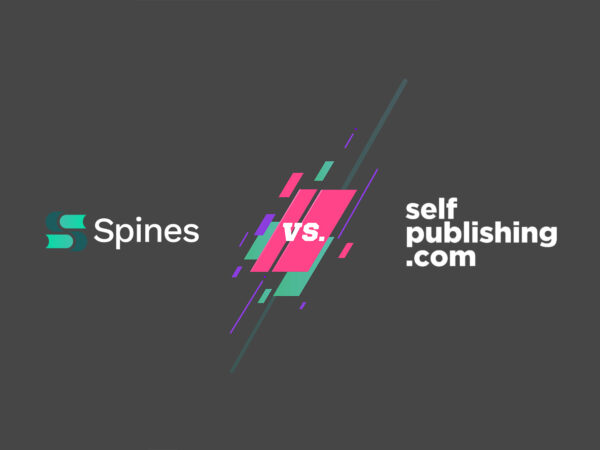There’s a special kind of thrill of seeing something you created to take on a life of its own. Whether it’s a beautifully written story, a handcrafted piece of art, or a clever bit of code, self-publishing your hobby project from initial idea into something tangible and shareable is a dream many of us harbor. It’s the moment your late-night brainstorms and spare-time experiments become more valuable than just personal triumphs—they become part of the world. There are a few things you should keep in mind to make this transition smoother and more successful.
Yet for most hobbyists, the leap from “just doing stuff for fun” to “ready to publish” feels daunting. How do you know if your project is good enough? What steps should you take to make it publishable? And of course, let’s not even start on submission guidelines or budgets! It’s no wonder so many great ideas stay locked in a desk drawer or buried in a folder on your computer.
This article is here to demystify that process. Whether you decide you’re writing the next great blog post, perfecting a DIY tutorial, or creating a resource others can’t wait to read, we’ll break down the steps to take your hobby project from concept to published reality. It’s not just about the finish line—it’s about enjoying the journey and putting your unique mark on the world.
From Free Time to Prime Time
Hobbies aren’t just a way to fill spare time—they’re how we explore what makes us tick. Whether you’re knitting scarves that could rival a boutique brand, writing fanfiction that outshines the original, or coding a nifty app to make your life and your day job easier, your hobby is more than a pastime. It’s a reflection of your creativity and a spark of inspiration that could entertain, educate, or connect with others.
Your Publishing Journey Awaits – Start NowThink about it: some of the biggest success stories started as hobby projects. J.K. Rowling was scribbling notes for Harry Potter on a napkin during her downtime. Julie Powell’s cooking blog became a best-selling memoir and a major motion picture (Julie & Julia). Even tech icons like Apple and Microsoft began as garage side-gigs. Your “weekend woodshop experiment” might not be the next billion-dollar startup, but it could be the tutorial that helps someone else build their dream shelf—or goes viral on TikTok, putting you in a better position to share your expertise.
Documenting and sharing your passion is about more than chasing fame. It’s about putting something unique into the world. Your story, process, or perspective could inspire someone without anything else to pick up a pen, brush, or keyboard. So don’t dismiss your project as “just a hobby”—it might be exactly what the world needs to see next.
Crafting a Publishable Project: Turning Passion into Pages
So, we assume you’ve got a hobby project—something you’ve been tinkering with in your spare time that fills you with excitement. But how do you know if it’s ready to leap into the world? The answer lies in a matter of a little refining, a bit of research, and a healthy dose of focus. Let’s break it down.
Refining Your Idea
Start by asking yourself a simple question: What’s the purpose of writing my project? Whether you’re interested in writing, coding, or crafting, a clear purpose helps you carve out a niche. Are you trying to entertain? Teach? Solve a problem? A well-defined goal can transform a fun idea into something impactful.
Doing Your Homework
Next, it’s time for a quick literature review (don’t worry, no dissertations here). Look at what’s already out there. If you’re writing, read similar books or blogs. If you’re coding, explore similar apps. The goal isn’t to compare but to see where your project fits. What makes it unique? How can it stand out in a sea of similar creations?
Avoiding “Too Many Ideas” Syndrome
One of the biggest traps for hobbyists is trying to do too much at once. Maybe you want to write a novel, start a podcast, and launch an Etsy store—all in one go. Spoiler alert: that’s a fast track to burnout. Instead, pick one project and commit to it. Treat your ideas for several hobby projects more like a queue: one gets your focus while the others patiently wait their turn.
Investing Time Without Losing the Fun
You don’t need endless hours to make progress—a few focused hours a week can go a long way. Schedule small, achievable tasks that move the needle. Remember, this is your passion project, so keep it fun. Mix the hard work (editing drafts, debugging code) of most projects with moments of joy (writing that one scene you love, designing something just for you).
Publishing your hobby project is a balancing act between dedication and playfulness. It’s work, yes, but it’s the kind of work that makes you proud when you see your progress. With a few hours of focus and a little effort, you’re well on your way to turning your passion into something you hope others will love, too.
Paying for Passion Without Breaking the Bank
Let’s be honest: turning your hobby project into something publishable often comes with a price tag. From editing and design to platform fees, the costs can add up faster to more money than your caffeine habit. But don’t worry—you don’t need to drain your savings to make your passion project shine. It’s all about spending: spend money smart.
Where the Money Goes
First, consider the usual suspects in publishing expenses:
- Editing: Whether it’s polishing prose, debugging code, or fine-tuning graphics, a professional touch can make a world of difference.
- Design: Covers, layouts, or app interfaces can determine if your audience sticks around or swipes left.
- Platform Fees: Self-publishing platforms like Spines (which includes bundled packages of all of the above), web hosting for a blog, or listing fees on creative marketplaces come with costs, but can be worth it to someone just breaking into the industry.
Spending Wisely
Luckily, there are ways to save while still putting out quality work for example:
- Use free tools like Canva for design or open-source software like GIMP for photo editing.
- For text-heavy projects, tools like Grammarly can handle basic editing before hiring a professional.
- Affordable freelancers on platforms like Fiverr or Upwork can help without breaking the bank.
When to Splurge vs. DIY
If your project relies heavily on first impressions—like a book cover or a critical app feature—investing money in professional help can pay off. But if you’re just starting a business or testing the waters, DIY options are your budget-friendly best friend. Remember: you can always upgrade later.
The Netflix Budget Perspective
Even the “cheap” route isn’t entirely free. A budget-friendly project might still mean sacrificing quite a lot each month from your streaming subscription. But here’s the silver lining: while binge-worthy shows come and go, your published project will stick around, inspiring others (and maybe even earning you some cash) for years to come.
Submission Guidelines, or How Not to Anger the Gatekeepers
Publishing your hobby project can feel like stepping into a labyrinth—exciting, but a little daunting. Whether you’re dreaming of seeing your book on Amazon, pitching your craft to a niche journal, or blogging your passion project, the path to publication is full of options—and rules. To succeed, you need to choose the right route, follow the guidelines, and handle rejection with grace. Before you dive into the submission process, consider seeking other answers by reaching out to professors or mentors who can provide valuable guidance and insights. Here are some tips that can point you in the right direction:
Your Publishing Journey Awaits – Start Now- Self-Publishing: The DIY option for full creative control. Platforms like Amazon Kindle Direct Publishing or Gumroad let you publish on your terms, but they’ll expect you to handle everything from editing to marketing. With a platform like Spines you won’t have to worry about those details.
- Traditional Publishing: For those ready to impress agents and editors, this route offers professional resources but requires patience, persistence, and a thick skin.
- Blogging: The easiest way to share your project piece by piece. Platforms like Medium or a personal website are perfect for essays, tutorials, or serialized stories.
Each option mentioned here has its perks, but the key point is choosing the one that aligns with your goals and project type. Most people think “submission” means a suggestion. Spoiler: it doesn’t. Submission guidelines are there to keep editors sane, and ignoring them is an easy way to get rejected. Whether it’s a word count limit, file format requirement, or specific genre focus, following these rules shows you respect the process—and gives your work the best chance of getting noticed.
Rejection stings, of course, but it’s a rite of passage. Use feedback to improve your project and try again. The first “no” doesn’t mean the door is closed; it just means you’re one step closer to finding the right fit. As frustrating as the process might feel, it’s worth the effort to refine your work and find its place in the world.
The publishing process might feel overwhelming, but with research, persistence, and a dash of a sense of humor, you can navigate it successfully—and maybe even enjoy the ride.
Getting It Out There: Promotion Without the Pressure
Publishing your hobby project is a huge accomplishment, but hitting “publish” isn’t the final step—it’s the starting line. To share your work with the world, you’ll need to promote it. Don’t worry; this doesn’t mean turning into a 24/7 salesperson. Instead, think of promotion as a way to connect with people who love what you’ve created.
- Spreading the Word: Social media is your best friend here. Platforms like Instagram, Twitter, or TikTok are great for sharing updates, behind-the-scenes glimpses, and teasers of your project. Prefer a low-tech approach? Word of mouth still works wonders—friends, family, and local communities can help spread the news. For the budget-conscious, free resources like Canva for graphics or Mailchimp for newsletters can make your promotional efforts look polished and professional.
- Engage, Don’t Just Broadcast: Promotion isn’t just about shouting into the void; it’s about building a community. Feedback from readers or users can help you refine your work and show you how it resonates with others. Replying to comments, hosting Q&A sessions, or starting conversations about your process can turn casual readers into loyal fans.
- Creative Ways to Shine: Many creators have found unique ways to promote their work: hosting virtual launch parties, offering free samples, or even turning funny bloopers into viral content. Your promotion should reflect your personality—quirky, polished, or anything in between.
- Keep It Fun: Promotion doesn’t have to feel like a chore. Treat it as an extension of your hobby, not a second job. The goal isn’t to become a marketing expert overnight but to enjoy sharing your passion with others. Remember: the joy of publishing comes not just from finishing the project, but from seeing it inspire and connect with people.
Self-Publishing Your Hobby Project: Your Hobby, Your Legacy
Your journey from hobbyist to published creator begins with a single idea. By working steadily, budgeting wisely, and embracing both the challenges and joys of the process, you can eventually turn that idea into something real, and shareable, and even start making money. Along the way, you’ll not only create something meaningful but also grow as a person and a creator.
Remember, your hobby project isn’t just a product—it’s a legacy. It has the potential to inspire, educate, or entertain others in ways you might never have imagined. So why wait? Take the first step, and turn your passion into something the world can see. After all, your hobby project could inspire someone else to start their own. A perfect place to start is with Spines, where your hobby can grow into a hardcover and begin your legacy in the publishing world.
Your Publishing Journey Awaits – Start Now







